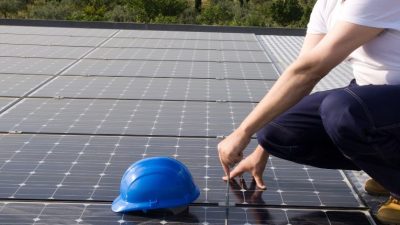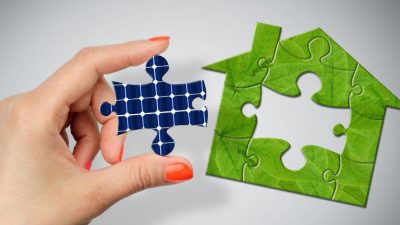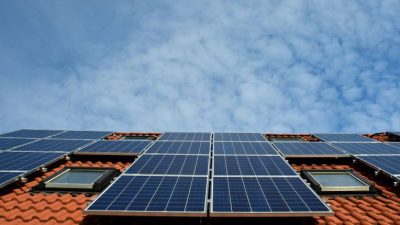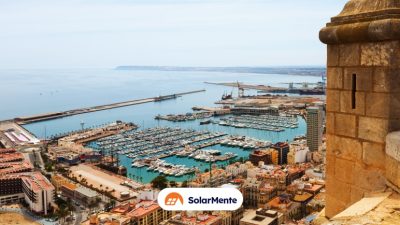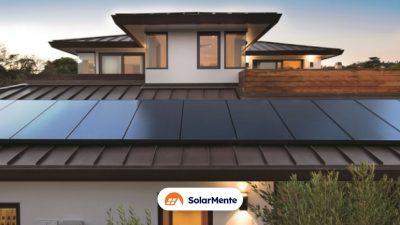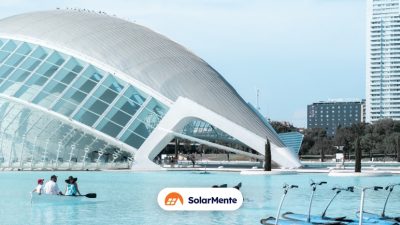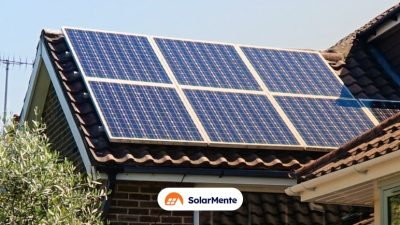Electricity prices are skyrocketing and climate change is on our heels. This is a fact.
All this has led to significant concern about the energy transition, where many individuals and companies have taken the step towards photovoltaic self-consumption.
In order to generate a high amount of energy, the performance of the solar panels must be taken into account. Both the energy production and the capacity of the panels to transform the sun’s energy into electricity suitable for home consumption depend on the productivity of the system.
Before making any investment, it is necessary to know the key elements that interfere with the profitability of the solar system.
Therefore, today we will discuss the following topics:
- Factors that intervene in the performance of solar panels.
- How winter affects the photovoltaic installation
- Do panels produce energy on cloudy days?
- How to improve the efficiency of our system
What are the factors that influence the performance of solar panels?
- PV installation materials
- Solar irradiation and geographical location
- Temperature
- Orientation and tilt
- Shading
Materials
To put it bluntly, this allows electrons to move more easily between the cells.
But be careful here. We must not only consider the material of the elements, but also the other components that are included in the photovoltaic installation and are necessary for proper operation. These are the inverter, the wiring and the solar batteries, in the case of opting for them if we want more independence from the conventional electricity grid.
What happens if we do not choose the right elements? A 20% reduction in the yield of the solar panels. This is why it is important to assess the quality of all components in order to extend the service life of the system and to avoid continuous failures that slow down the amortisation time.
The variety of solar panel manufacturers is abysmal. Therefore, we understand how difficult it can be to choose from such a wide range, which can be overwhelming. It takes time to do your research and make the right decision.
To help you, at SolarMente we work with several manufacturers and advise you on the one that best suits your needs and budget.
Solar irradiation
What factors influence the obtaining of a higher solar irradiation? Always take into account the climate of the area, the inclination of the panels and the shadows.
Of these, the weather plays a major role and will allow more or less radiation to the surface. There are three types of radiation: direct, diffuse and reflected.
Direct radiation, as the name indicates, is that which comes directly from the sun. Diffuse radiation, on the other hand, is the reflection it produces on clouds.
Finally, reflected radiation is generated by light bouncing off the surface. We will only see it in houses located perpendicular to the area.
In short, depending on the climate of the geographical area where you live, you will receive more or less solar radiation. And this will have an impact on the performance of your system.
Temperature
Numerous manufacturers and installers have carried out various tests on this subject, where the conclusion has been the following: the highest electricity generation is produced at a temperature of 25ºC.
If this temperature is exceeded, profitability is reduced. As a general rule, productivity decreases by 1% for every 2°C increase in temperature.
However, manufacturers include the Power Temperature Coefficient in the technical data sheet of the modules. This parameter indicates the power loss that occurs when the system temperature rises above 25°C. The lower this parameter is, the greater the power loss.
The lower this indicator is, the more performance we will obtain from our panels. The figure is currently between 0.30%-0.40%. There are hardly any losses.
Orientation and inclination
A southern orientation is ideal, since the perpendicular rays are reflected on the surface, allowing for increased productivity and profitability. In short, more use is made of the sun’s rays for greater production by our system.
Let’s see what happens with houses located to the west and east:
- In west-facing dwellings, the most light is received during the hours closest to the night.
- Houses in the east wing receive the most light in the early hours.
Well, the ideal tilt for homes located at the same angle as Madrid will have an inclination of 30º. From this point onwards, the northern provinces will have to increase the tilt ratio to 40º, while in the southern part of the country this figure will be reduced.
Shadows
Maintenance
Strong winds, hail, pollution or accumulated dirt can damage our panels, reducing their performance by 15%.
However, we must make a small clarification in this respect. Certain phenomena help to keep the solar panels clean and in good condition, such as rain, which removes dust and dirt.
Do you need to invest heavily in maintenance? The positive point of all this is that they hardly require any attention thanks to their main component: silicon. It is a resistant material that is prepared for all weather conditions and extends the service life of the installation without affecting the production of solar energy.
You only need to clean the modules with water and a sponge 3-4 times a year. In the event that you need to replace defective parts, you will have to call the installation company to solve the problem.
Performance of solar panels in winter: is seasonality an issue?
It is true that if they are covered with snow in its entirety, the system will suffer, but the heat emitted by the solar panels helps to melt the snow and keep them clean from the dust and dirt accumulated during the summer.
In addition, the modules are able to capture the sun’s rays that reflect off the snow.
However, this meteorological effect will not noticeably affect the system and the effect on the annual production rate will be minimal.
Performance of solar panels on cloudy days
It is true that it reduces production, but it still remains between 10%-25% of its capacity. Therefore, it is still cost-effective to have solar panels on cloudy days.
How to improve the performance of our photovoltaic panels
- Clean the panels 3-4 times a year. Accumulated dirt can reduce the production capacity of the system.
- Use the right inverter. This will influence the yield of the solar panels. String inverters will be affected by shading. Our recommendation is to opt for more advanced technologies such as microinverters or power optimisers.
- Choose the right wiring size. Different wiring configurations can influence the performance of the installation and the amount of energy production.
Maximise the profitability of your PV system
At SolarMente, we work with manufacturers that provide high efficiency panels to maximise energy production. In this way, the savings on electricity bills will be noticeable thanks to a good self-consumption system.
To find out, try our solar calculator and find out the potential savings on your monthly electricity bill.







